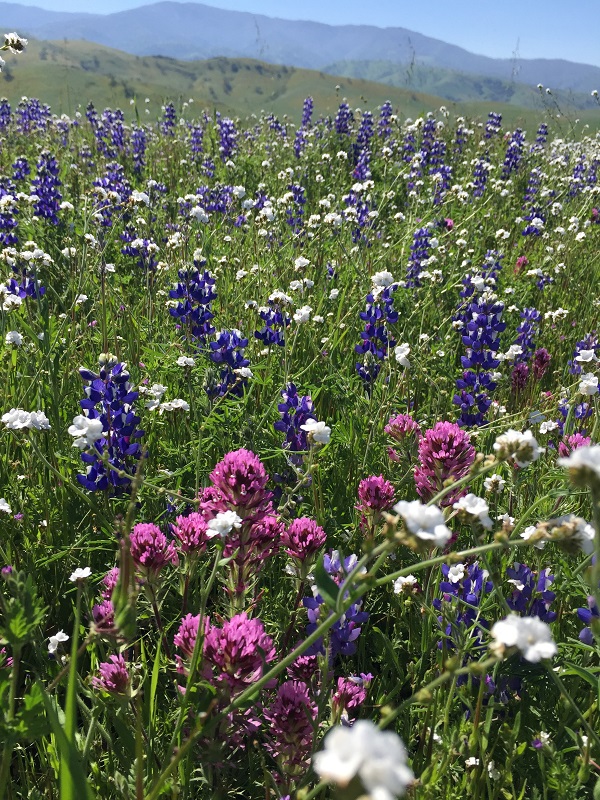
Photo by Katie Ferguson
Happy Native Plant Week! In 2010, the California legislature designated the third week of April to be California Native Plant week, so this is the perfect time to take a moment to appreciate the beauty and diversity of California’s native flora. With approximately 6,500 species of plants naturally occurring in our state, and one third of those species growing nowhere else in the world, there is certainly quite a lot to appreciate!
While in-person gatherings and outings associated with Native Plant Week have been postponed to prevent the spread of coronavirus, there are still plenty of ways to explore and appreciate native plants from within your own home.
 Calflora is an invaluable resource for anyone interested in native plants. It is a comprehensive database that includes all plants that grow wild in California (both native and non-native species) and has a detailed profile page for each species, among many other useful features.
Calflora is an invaluable resource for anyone interested in native plants. It is a comprehensive database that includes all plants that grow wild in California (both native and non-native species) and has a detailed profile page for each species, among many other useful features.
 iNaturalist is a citizen science project that allows users to upload and share observations. If you need help identifying a plant, iNaturalist will offer suggestions based on your photos and other species seen nearby, or you can enlist the help of other users to identify your observation. It is also a useful tool for exploring observations that have been made nearby; if your local ordinances allow, take a walk to a park and make some observations. And don’t forget to
iNaturalist is a citizen science project that allows users to upload and share observations. If you need help identifying a plant, iNaturalist will offer suggestions based on your photos and other species seen nearby, or you can enlist the help of other users to identify your observation. It is also a useful tool for exploring observations that have been made nearby; if your local ordinances allow, take a walk to a park and make some observations. And don’t forget to  join the CNDDB iNaturalist project!
join the CNDDB iNaturalist project!
 Zooniverse: Notes from Nature - Capturing California’s Flowers is a citizen science project that allows anyone to help California herbaria by transcribing herbarium labels from their collections. This is a perfect activity for when you’re stuck inside, but still want to help contribute to the botanical knowledge of California.
Zooniverse: Notes from Nature - Capturing California’s Flowers is a citizen science project that allows anyone to help California herbaria by transcribing herbarium labels from their collections. This is a perfect activity for when you’re stuck inside, but still want to help contribute to the botanical knowledge of California.
You can also visit the  CNPS website for additional information and activities related to Native Plant Week.
CNPS website for additional information and activities related to Native Plant Week.